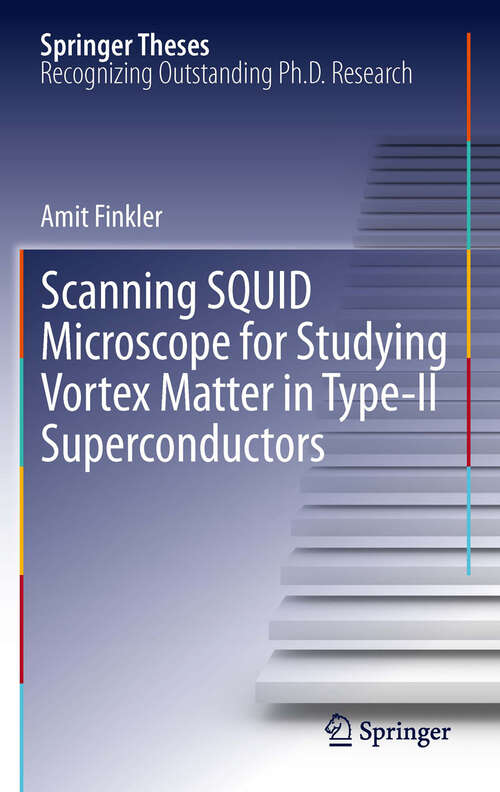Scanning SQUID Microscope for Studying Vortex Matter in Type-II Superconductors
By:
Sign Up Now!
Already a Member? Log In
You must be logged into Bookshare to access this title.
Learn about membership options,
or view our freely available titles.
- Synopsis
- Common methods of local magnetic imaging display either a high spatial resolution and relatively poor field sensitivity (MFM, Lorentz microscopy), or a relatively high field sensitivity but limited spatial resolution (scanning SQUID microscopy). Since the magnetic field of a nanoparticle or nanostructure decays rapidly with distance from the structure, the achievable spatial resolution is ultimately limited by the probe-sample separation. This thesis presents a novel method for fabricating the smallest superconducting quantum interference device (SQUID) that resides on the apex of a very sharp tip. The nanoSQUID-on-tip displays a characteristic size down to 100 nm and a field sensitivity of 10^-3 Gauss/Hz^(1/2). A scanning SQUID microsope was constructed by gluing the nanoSQUID-on-tip to a quartz tuning-fork. This enabled the nanoSQUID to be scanned within nanometers of the sample surface, providing simultaneous images of sample topography and the magnetic field distribution. This microscope represents a significant improvement over the existing scanning SQUID techniques and is expected to be able to image the spin of a single electron.
- Copyright:
- 2011
Book Details
- Book Quality:
- Publisher Quality
- ISBN-13:
- 9783642293931
- Related ISBNs:
- 9783642293924
- Publisher:
- Springer Berlin Heidelberg
- Date of Addition:
- 10/11/16
- Copyrighted By:
- Springer
- Adult content:
- No
- Language:
- English
- Has Image Descriptions:
- No
- Categories:
- Nonfiction, Science, Technology, Earth Sciences
- Submitted By:
- Bookshare Staff
- Usage Restrictions:
- This is a copyrighted book.
